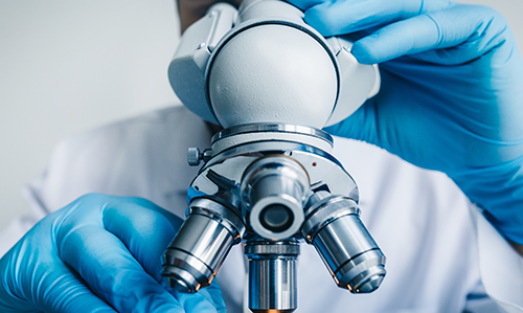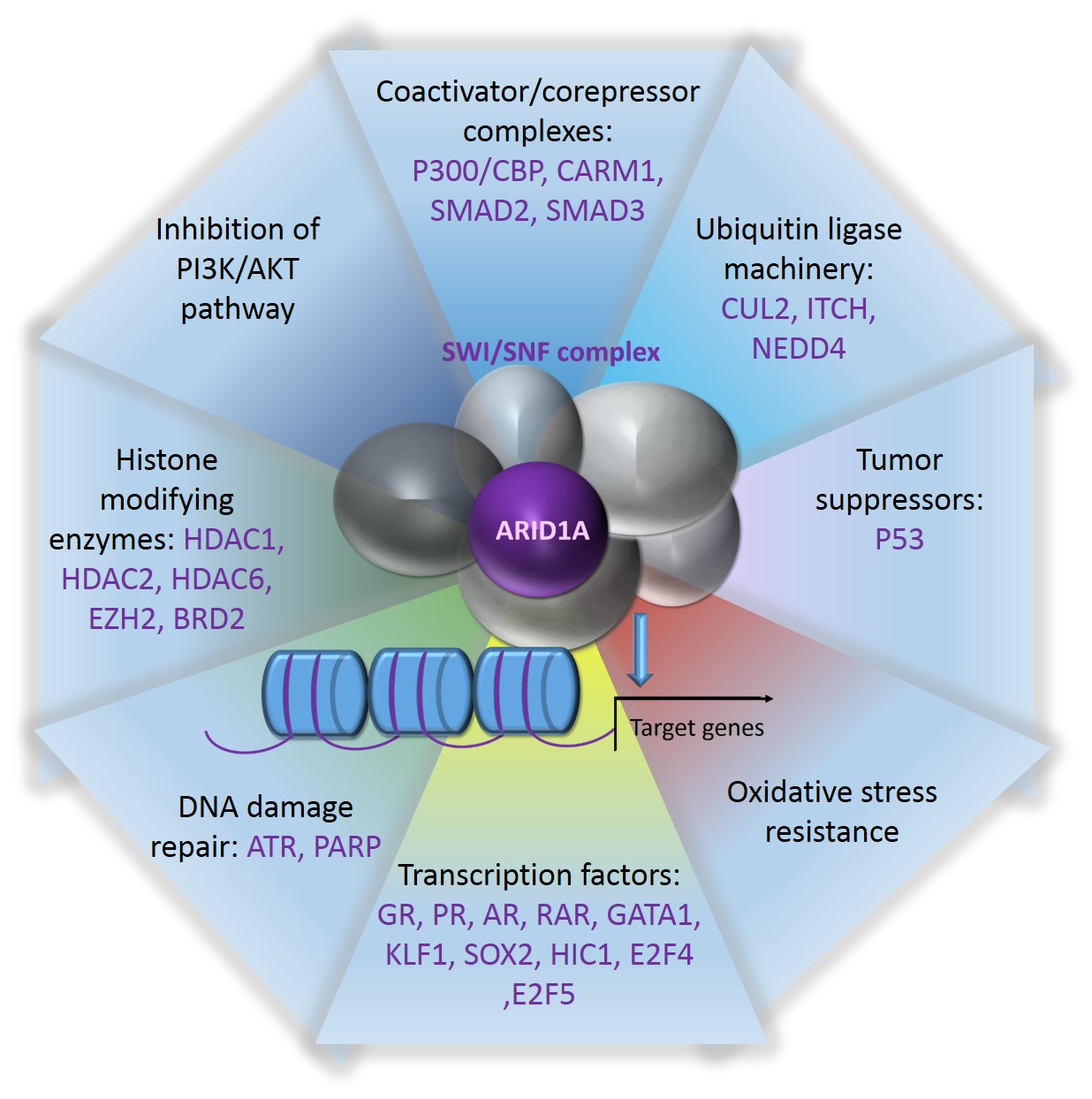Breast cancer translational research Laboratory
R&D > Laboratories > Breast cancer translational research Laboratory-Dr. Amir Sonnenblick

Our Vision
Our lab operates at the interface between basic research and clinical research also known as cancer translational research. We specifically focus on breast cancer translational research. At the core of our laboratory is the constant dialog between clinicians and scientists. The process of translational research can be viewed as a cycle with defined phases and identifiable checkpoints showing how novel findings can be readily translated into clinical trials. Fundamental clinical observations lead to new directions of research and from the original hypothesis, through early scientific testing and preclinical tests the discovery ultimately moves into the clinic. This integrated approach has the potential to bring personalized medicine to the forefront of patient care. We use multiple approaches to decipher the mechanisms involved in breast cancer progression and resistance development to anti-cancer drugs. Moreover, we operate to contribute to the development of personalized medicine that tailors medical treatments to individual patients. An important goal for the lab is the generation of a very powerful translational research tool- a living- biobank of breast cancer organoids. Via assembly of a collection of breast cancer tumor tissues we will pursue the identification of genomic, proteomic and metabolic signatures for individualized therapies. Our lab benefits from a direct access to clinical databases and to biological samples, including a tissue-bank, facilitating relevant and significant translational research. The laboratory also benefits from both, the strong clinical platform of the Breast Cancer Division and the cutting edge technological and scientific facilities available at the medical center. The Laboratory operates to establish close collaborations between basic research scientists, bioinformaticians, oncologists, radiologists and pathologists from Israel and from worldwide leading academic and medical institutes.

Contact Us
Primary Investigators

Dr. Amir Sonnenblick, Lab PI

Dr. Noa Keren-Khadmy , Lab manager
General Contact
Address
Sammy Ofer Heart Building
10th floor Room 74-76

Research
There is growing evidence that interaction of cells in the tumor stroma such as cancer associated fibroblasts (CAFs) with tumor cells is pivotal in breast cancer progression and response to therapy.
Tumor-associated stroma contribute to cancer growth and progression by promoting stromal–epithelial paracrine signaling. However, only few stromal signatures were developed and found to be prognostic especially in the HER2 breast cancer subgroup.
This project aims to explore the effect of stromal reactivation on the efficacy of different anti-HER2 treatments (alone and combined) in a tractable co-culture and xenografts models
The tumor suppressor ARID1A, a SWI-SNF pathway component, is frequently mutated in estrogen receptor (ER) positive breast cancer which associates with ER loss at relapse. However, little is known about its underlying molecular mechanism. This project aims to:
I. Investigate the effect of ARID1A loss on breast tumor development and ER loss in vitro and in vivo
II. Elucidate the molecular mechanisms underlying ARID1A role in hormone-independent growth
III. Evaluate the role of ARID1A suppression in ER loss and treatment resistance in the clinical setting
This study will offer new strategies toward more efficacious therapy and better-defined target patient populations.
Multiple studies have focused on the PI3K/Akt/mTOR pathway in estrogen receptor positive (ER) breast cancer as a linear signal transduction pathway and reported its association with poor clinical outcome. Using an approach that integrated protein-based (RPPA) proteomic status and gene expression data, we could determine that, Akt and mTOR are not linearly connected in luminal breast cancers. While pAkt was associated with PIK3CA mutations, luminal A and good prognosis, p-mTOR was associated with luminal B and bad prognosis. However, the reason for the nonlinear connection is not completely understood. This project aims to elucidate the molecular mechanisms underlying Akt/mTOR axis regulation in luminal ER+ cancers and thus may increase our understanding of this fundamental pathway which has been recently the target of multiple clinical trials with mixed results and could have important implications for the treatment of luminal breast cancers.
Gallery









Our Team
Current Staff
Researchers
- Dr. Amir Sonnenblick MD PhD
- Dr. Noa Keren-Khadmy PhD
Research assistant
- Yael Dugach
Students
- Omer Less, MD student
Current funding










Highlight Publications
The Effect of Diathermy Power Settings on Oral Cavity Mucosal Contraction: A Rat Model. Warshavsky A , Shivatzki S , Kampel L , Leider-Trejo L , Shapira U, Muhanna N, Ungar OJ , Fliss DM , Kaplan I , Horowitz G .
Laryngoscope 2021 May;131(5)
Assessment of a liposomal CT/optical contrast agent for image-guided head and neck surgery Muhanna N , Eu D Chan HH , Daly M, Fricke IB, Douglas CM , Townson JL , Zheng J , Allen C , Jaffray DA , Irish JC
Nanomedicine November 2020:102327;
role of parotidectomy for advanced cutaneous squamous cell carcinoma of the head and neck. Kampel L , Dorman A , Horovitz G , Warshavsky A , Gutfeld O , Muhanna N
. The Eur Arch Otorhinolaryngol. 2021 Jan 6. Online ahead of print.
More Publications >>
Photodynamic therapy enables tumor-specific ablation in preclinical models of thyroid cancer. Muhanna N , Chan HHL , Townson JL , Jin CS, Ding L , Valic MS , Douglas CM , MacLaughlin CM , Chen J , Zheng G , Irish JC
Endocr Relat Cancer. 2020;27(2):41-53.
Sentinel lymph node mapping using ICG fluorescence and cone beam CT – a feasibility study in a rabbit model of oral cancer. Muhanna N , Chan HHL , Douglas CM , Daly MJ , Jaidka A , Eu D , Bernstein J , Townson JL, Irish JC . BMC Med Imaging 2020;20(1):106.
Intraoperative cone-beam CT spatial priors for diffuse optical fluorescence tomography. Daly MJ , Chan H , Muhanna N , Akens MK , Wilson BC , Irish JC , Jaffray DA. Phys Med Biol. 2019 Nov 4;64(21).
The image-guided operating room-Utility and impact on surgeon’s performance in the head and neck surgery. Muhanna N, Douglas CM , Daly MJ , Chan HHL , Weersink R , Qiu J, Townson J , de Almeida JR , Goldstein D , Gilbert R , Yu E , Kucharczyk W , Jaffray DA , Irish JC. Head Neck. 2019;41(9):3372-82
Cell-Free DNA Kinetics in a Pre-Clinical Model of Head and Neck Cancer. Muhanna N, Di Grappa MA, Chan HHL, Khan T, Jin CS, Zheng Y, Irish JC, Bratman SV. Sci Rep 2017 Dec 1;7(1).
Impact of Type 2 Diabetes Mellitus on Survival in Head and Neck Squamous Cell Carcinoma. Foreman A, Lee DJ, McMullen C, de Almeida J, Muhanna N, Gama RR, Giuliani M, Liu G, Bratman SV, Huang SH, O’Sullivan B, Song Y, Xu W, Goldstein DP. Otolaryngol Head Neck Surg. 2017 Oct;157(4):657-663.







